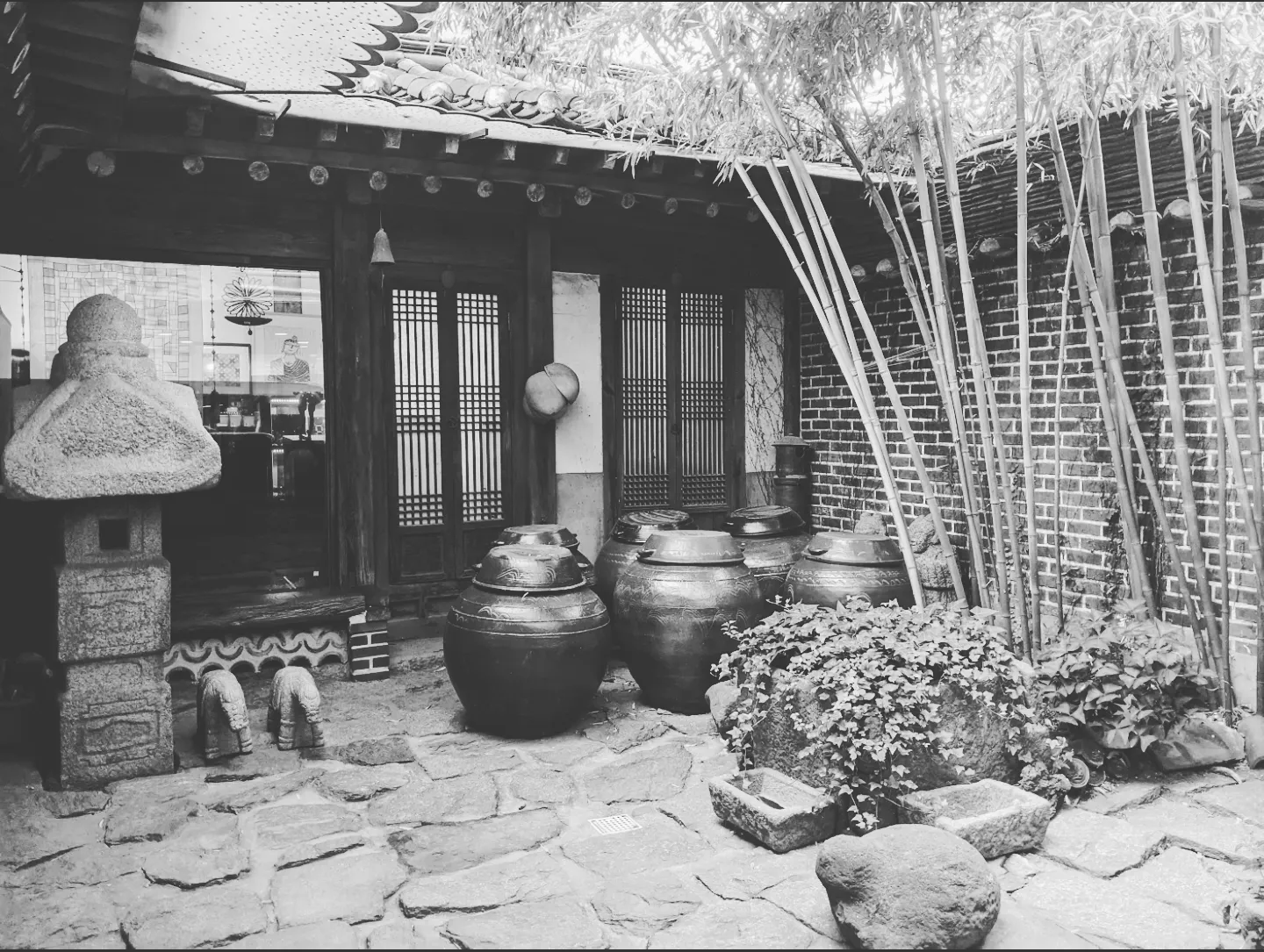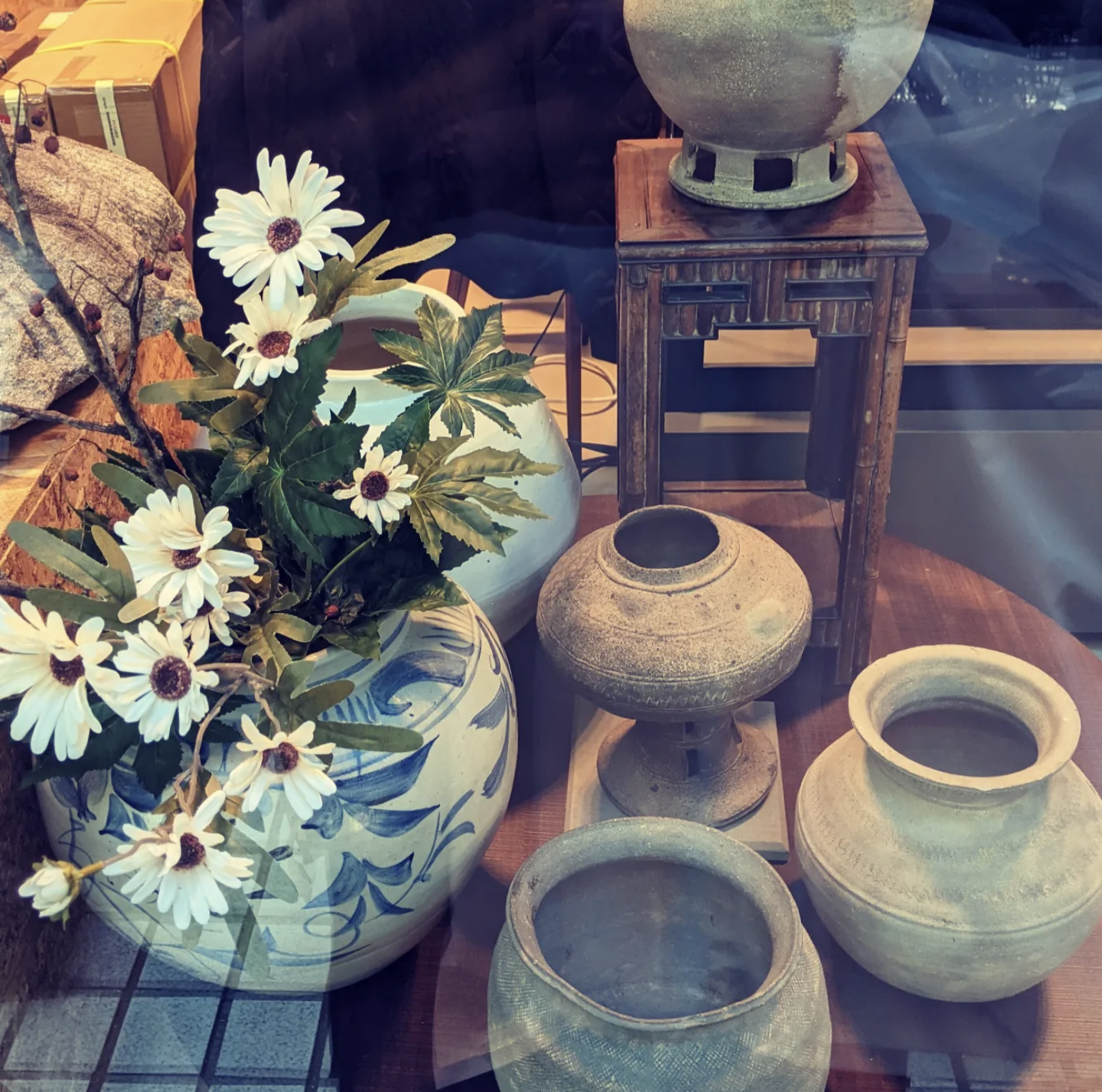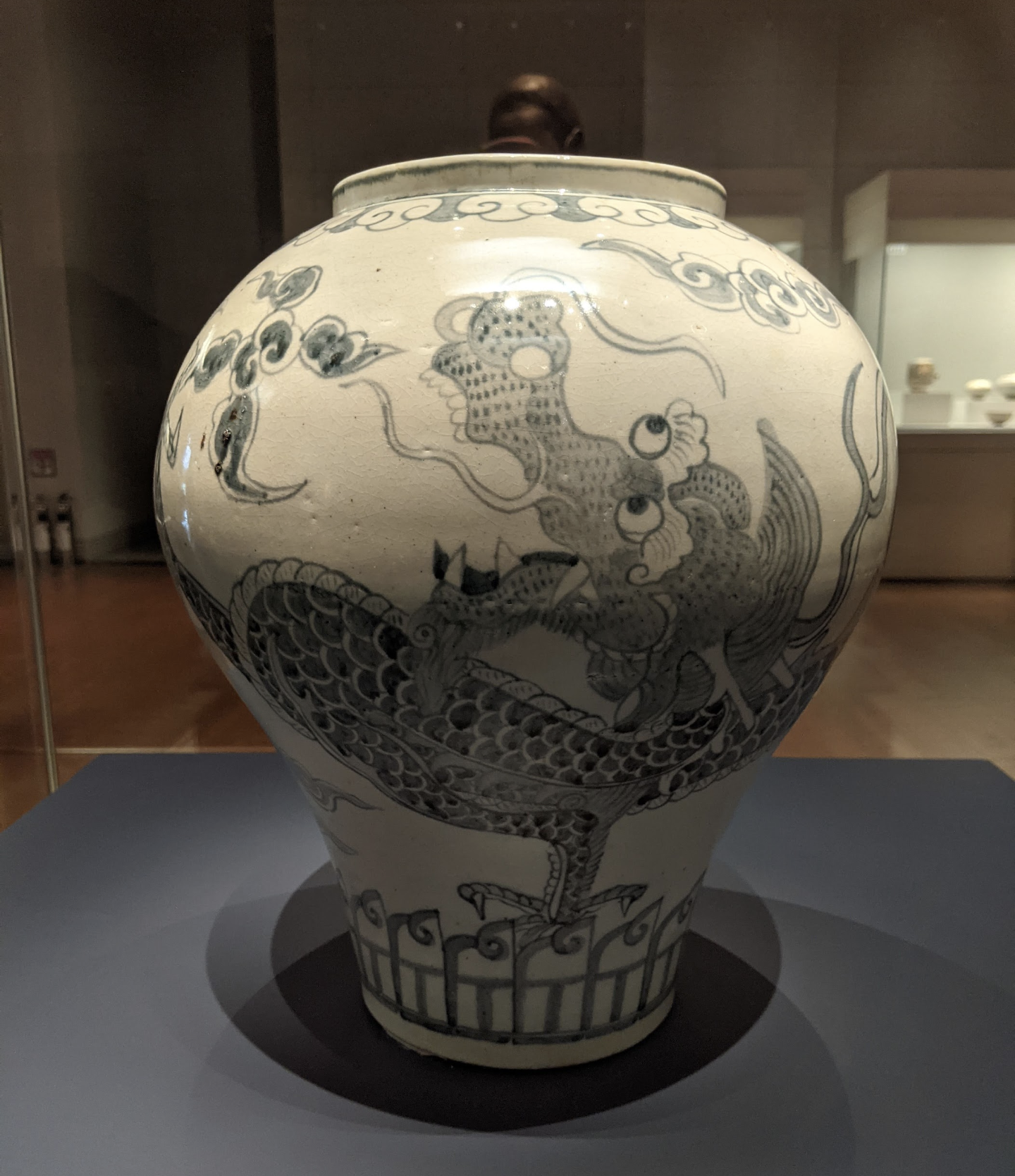The Joys of Korean Pottery.
“I have not found any defects in Korean jars. They are all very rounded in shape, but they are not identical. They are all white, but the whiteness differs.”
-Kim Whanki
My passion for pottery was awakened by the beauty of Joseon era pottery while visiting with my in-laws in Seoul. Historically overshadowed by the eloquent celadons of the Goryeo era, Joseon pottery has enjoyed growing appreciation. Joseon pottery may be broadly divided into white porcelain, or baekja, and earthernware with white slip called buncheong. Buncheong pottery was descended from the traditions of Goryeo celadon, particularly the use of inlaid lines which formed intricate patterns in relief which when filled with glaze. Baekja porcelain became more refined over time. White porcelain with cobalt designs were particularly prized and were limited to the Royal court. Plain white porcelain was used for many ritual purposes and was highly prized for aesthetic and symbolic reasons by the scholarly elites of Joseon.
The great importance placed on baekja was heavily influenced by Confucian ideals of simplicity and purity. In Earth, Fire, Soul: The Masterpieces of Korean Ceramics,
“It is crucial to realize that white porcelain was seen as the physical embodiment of the mind and spirit of the Neo-Confucianist scholars who founded the Joseon Dynasty. Joseon Neo-Confucianism focuses on two levels of human existence: self-cultivation at the individual level, and human relations at the social level. In particular, Confucius emphasized self-cultivation through the following four acts: constant mental introspection…; development and refinement of morals (grI: careful maintenance of propriety; and close observation of ones behavior in solitude. These ideals were thought to be visualized by the pure white color and the stately yet humble forms of Joseon plain white porcelain.”
While pottery from China offered a wide array of colorful embellishments, such as cloisonne, Korean pottery displayed a refined simplicity, especially evident in the baekja porcelain pots made during this time. The buncheong earthenware would exert a powerful influence in Japanese ceramics, as it was prized by many tea masters as the epitome of the wabi sabi aesthetic. The simplicity and elegance of white slip brushed over dark earthenware has been the subject of much praise from the craft movement in Japan (Mingei) started by Soetsu Yanagi, as well as his friend, Bernard Leach, the famous English potter.
During the Joseon era, there were huge pottery centers that produced great numbers of impressive works, which were used for a wide range of official and practical purposes. One form that has enjoyed particular acclaim recently is the moon jar (Dal Hangari, in Korean). These vessels were traditionally made by separately forming the top and bottom portions of the jar and joining them on the wheel. The resultant forms were characterized by pleasing idiosyncrasies as the shape of the jar would never be completely symmetrical.
The term moon jar was coined by Korea’s most celebrated painter, Kim Whanki, who frequently treated moon jars as a subject in his tremendous paintings. Whanki wrote that, “I once painted only jars; then, I started to paint the moon. Maybe because the roundness of the moon is similar to that of the jars, or maybe because they both very much imply the subtle, the delicate and the subdued. There’s a French proverb that says ‘as foolish as the moon.’ I have never held a bright mind like the splendid sun, but I still have lost nothing hot and glaring in my heart.”
On another occasion Whanki opined that, “I have not found any defects in Korean jars. They are all very rounded in shape, but they are not identical. They are all white, but the whiteness differs. I couldn’t imagine and often wondered how that simple roundness, simple whiteness remains and resonates with such a complex, subtle and mysterious beauty. They all seem serene, but they connote dynamism and speed. Seemingly cold to the touch, I could feel the warmth in the texture. They are surely a culmination of formative beauty. I’m not exaggerating when I say I believe that my opening to beauty truly originated from Korea’s traditional jars.” I certainly felt this allure when I encountered a particularly astonishing moon jar in the National Museum in Seoul. The moon jar on display was very large and sections of it were accented with a transparent blue glaze. The form was not quite symmetrical. The overall impression was of overwhelming beauty, refinement, and the cool freshness of air after a night of rain.
These jars were once used for practical purposes, such as storing soy sauce, but they have come to be associated with the spirit of Korea. I searched around and found a beautiful moon jar at the Yongsan Arts Center in Seoul and brought it back home with me. I quickly regretted not buying more moon jars. I found a great website called Daurim.com and I have since bought a number of moon jars from them. Daurim works with a number of different potters in South Korea and prices for their larger items are inclusive of insured shipping to the US.
One of the moon jars that I bought broke in transit and needed to be replaced. The process was pretty seamless, so I can also state their customer service is very good. Aside from moon jars, Daurim offers numerous other traditional Korean vessels, such as maebyong, vases used to hold plum tree branches. Studio Ko in LA is another great source of moon jars for residents of the U.S. Studio Ko is more expensive but their moon jars are worth the price. There is also a dealer in England called Han Collection that specializes in Korean ceramics. Recently, I have sourced some truly spectacular Joseon dynasty moon jars from Dai Ichi Arts, a phenomenal dealer of Japanese ceramics whom I will highlight in a future article.
The great pleasure of pottery stems from pottery’s combined aesthetic and functional purposes. Great works are built upon a tradition of craftsmanship. There are so many important factors such as the choice of clay, form of the vessel, application of glazes, and type of firing (wood fired kilns allow for all kinds of pleasant surprises). It is wonderful to be able to enjoy a beautiful vase as a standalone object, and then again, with various flowers. I also love to draw various items of pottery and find that doing so draws me into greater appreciation of these objects. Finally, although one can certainly spend a lot on a given item of pottery if one wishes, it is easy to find unique and beautiful objects of pottery all around and one need not spend much money. Bit by bit, one can build a collection of artisanal objects which can enhance one’s meals and daily life. This will just be the beginning of an increasingly rich experience.
Above: Modern Korean pottery inspired by Korean baekja.
This article represents the first of what will become a series of articles detailing the joys of pottery and other craft mediums.
Further Reading:
Earth Fire Soul: The Masterpieces of Korean Ceramics
Korean Ceramics: The Beauty of Natural Forms (Korea Essentials) by Robert Koehler
Korean Buncheong Ceramics from Leeum, Samsung Museum of Art Hardcover by Soyoung Lee
This article represents the first of what will become a series of articles detailing the joys of pottery and other craft mediums.
**This article has NO SPONSORED content of any kind.









